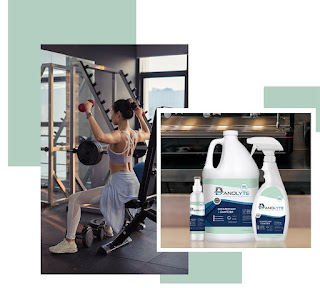Hypochlorous acid
Hypochlorous Acid is
the most ancient disinfectant in nature, and right now, it happens to be
cruising around in about every human body. As in inside all human beings, this
very moment. Why? It’s the substance produced by your white blood cells to
fight off infections. Also, the active component in electrolyzed water, which
is an industrial technology used for eco-friendly cleaning and sanitizing.
Electrolyzed water is made when electricity is utilized to modify the chemical
structure of salt, vinegar, and water into a green cleaner as efficient as
bleach, but with no poisonous chemicals, or residues.
A robust disinfectant needs to satisfy many standards, not only in its efficacy but also in terms of packaging, use, and operator acceptability. gives a brief sketch of requirements that will help when examining available chlorine disinfectant chemical substances.
Record as a given good broad-spectrum potency, including profoundly repellent bacterial spores, the specifications for the ideal disinfectant are quite lengthy: a sterile option for grade A and B environments non-inflammable so can it be practiced over large areas with no health and safety concerns; also fast drying with short contact times to reduce the time taken for bio-decontamination.
The added element is that the cleaning procedure leaves no residue disinfectant or, as a minimum, free rinsing residues. This is in view of the fact that no residue suggests there is no requirement for residue elimination and this, in turn, can reduce the decontamination process. The output will need to have in excess of unopened shelf life of 12-month and in excess of three months in-use shelf life to be efficient to store and use. This perfect disinfectant would then require to be made to the requirements of cGMP, be notified to the BPR2, and provided in a compatible packaging in a variety of forms so that it is suitable for use in all areas.
It goes without saying that this all needs to be accomplished in a cost-effective formulation. Many people believe that this prototypical sporicide does not exist and a settlement must always be made.
Initially, a chlorine-based disinfectant would not considerably spring to mind as the disinfectant that satisfies all of these prototypical needs. The most used chlorine-based surface disinfectant is Sodium hypochlorite but has some obvious drawbacks, prominently: inactivation in organic matter. to some metals, it is erosive, and will leave a particle residue.
Hypochlorous Acid is so mild that it has numerous uses in the healthcare and medical space. It’s approved by the FDA for use in wound care, wound healing, and eye care goods and is also popular in veterinary care products. It’s even used to eradicate biofilm. Extensive research has been there on the efficacy and gentleness of HOCl when it comes to eliminating bacteria. It is so trusted and effective, that the hospitals use it as a Disinfectant




Comments
Post a Comment